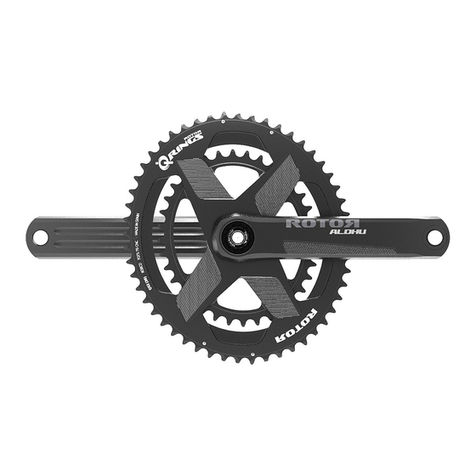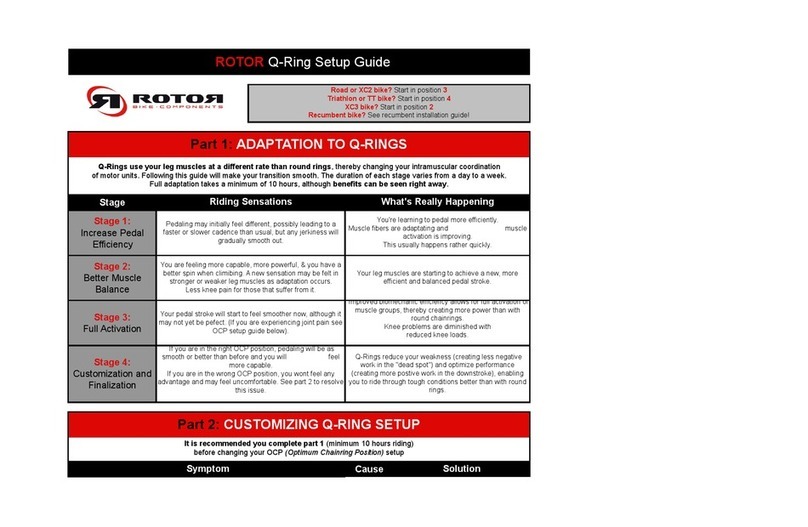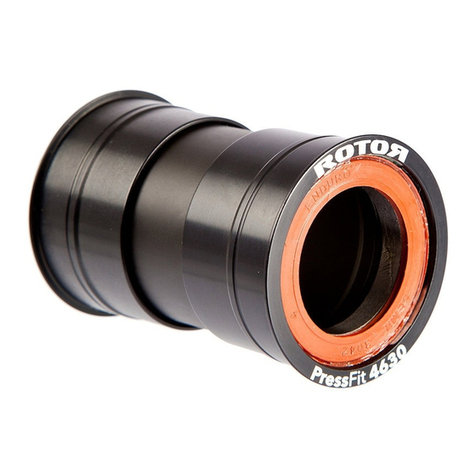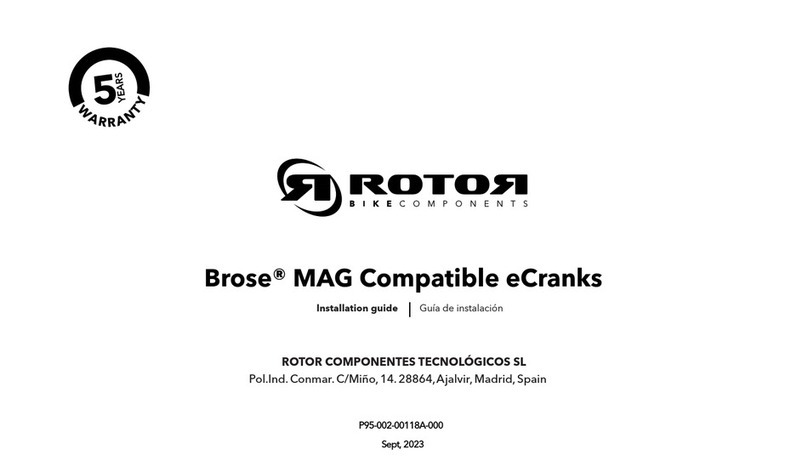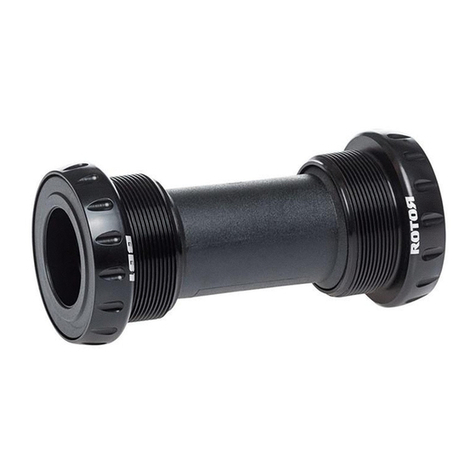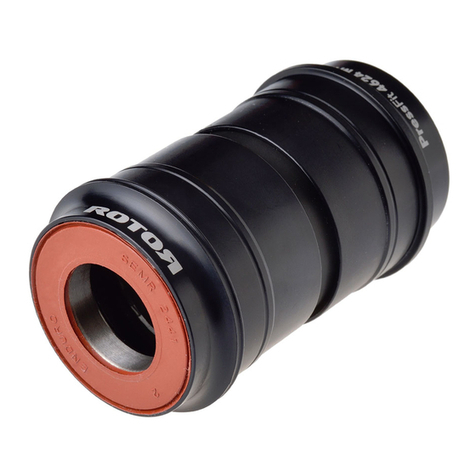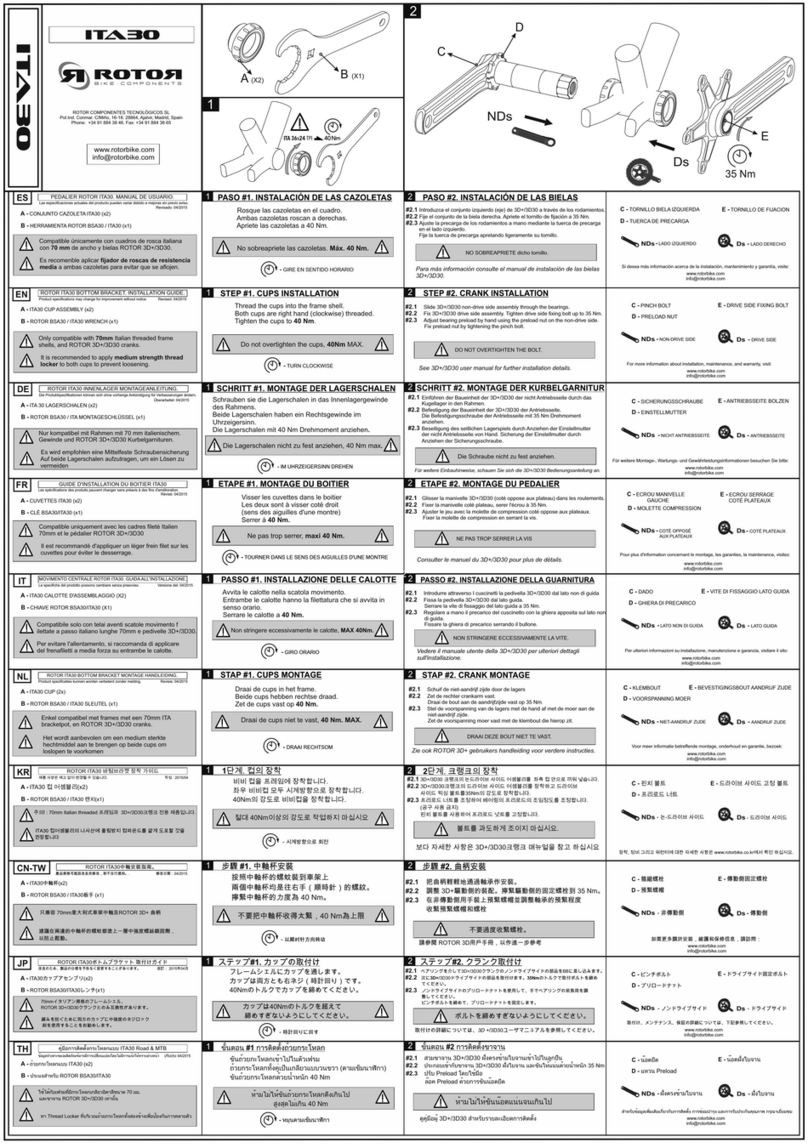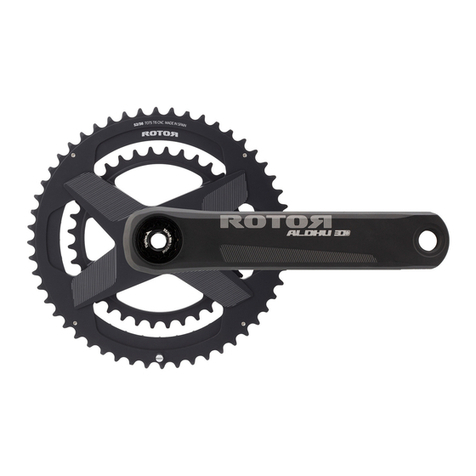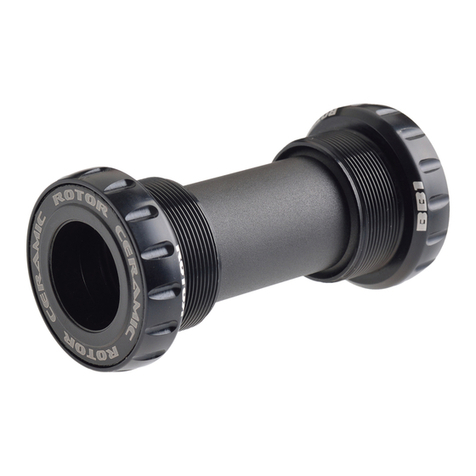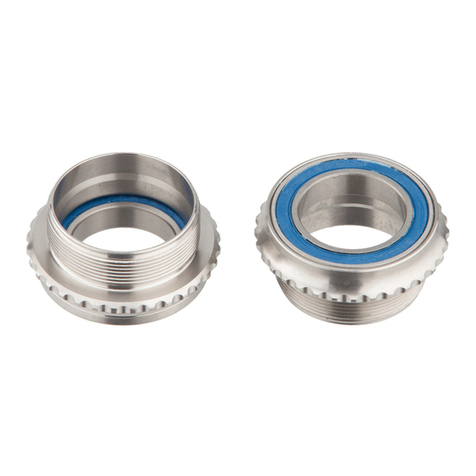ADAPTATION PHASES
Transition from Round rings to Q-Rings.
Q-Rings use a your leg muscles at a different rate than round rings. This muscle balance change is why it is important to follow this guide, which will make your transition
smooth. Please do not install the Q-Rings until you have read sections 1- of this document entirely. The time spent in each phase varies from a few days to a week;
depending on the cyclist. Some phases pass faster than others. Adaptation takes a minimum of 500km (road) / 200km (MTB)
Pedalling may feel different, leading to a faster or slower cadence than usual. You may notice an initial jerkiness, which will smooth out
after the first few kilometers (high revs may be choppy for a while). Maintain the same gear combinations as usual. Do not push yourself too
hard. Avoid focusing on a “perfect spin”: this means your legs will try to make Q-Rings round which they are not. Simply focus on pushing the
pedals and allow yourself time to adapt to the Q-Rings healthier, performance enhancing pedal stroke.
Phase 1:
Brain Training
Adaptation phase Characteristics of phase
Q-RING ADAPTATION PHASES GUIDE
It is recommended you complete the first 3 adaptation phases before changing your chainring's OCP setting
Road or XC2 bike? Start in position 3
Triathlon or TT bike? Start in position 4
XC3 bike? Start in position 2
Recumbent bike? See recumbent installation guide!
Phase 2:
Easy riding
Q-Rings’ improved biomechanic efficiency spreads leg muscle loads more evenly than normal chainrings, reducing knee problems and
making your muscles work together at different rates than with round chainrings. You may notice that your weaker inner leg muscles are
being pushed harder to maintain an effort level that feels normal. Do not panic: keep on building baseline Km’s without exerting yourself too much,
developing said muscles without overloading them. (Even if you feel more powerful, try to resist the temptation to go all out).
Phase 3:
Muscle adaptation
You may feel a strange sensation in your stronger leg muscles because they are not being loaded as heavily as usual. This is a normal
continuation of the feeling you had in phase 2: your weaker muscles are equalizing in strength and taking on more work. Continue riding as usual
and this feeling will fade away. If you rode hard last week these developing muscles may be fatigued: masage, stretch and step the effort down a
notch for a few days. Your pedal stroke with be smoother now. If something doesn’t feel “quite right” keep on riding the Q-Rings until your muscle
adaptation has finalized (unless you are experiencing joint pain: see part two and contact us in this case).
Phase 4:
Finalization and
Customization
Your leg muscles will now have achieved a new, healthier balance. Because Q-Rings reduce your weakness and optimize gearing
according to your legs immediate capacity, you will now ride through tough conditions more capably than you could before. If you are in
the right OCP position, your spin will be as smooth as before (or better) and your heart rate may be lower than usual. Your legs and knees will likely
feel fresher at the end of rides. If you are still experiencing problems, you can now adapt the position of your chainring to optimize your Q-
Rings' position for your riding style on your bike. The aim here is to help you find your ideal setting in an analytical manner: In doing so it is
important to let your legs, heart rate and effort level speak, not your preconceptions (which can cause you to set your rings up incorrectly).
Do not adjust OCP positions before finishing phaze 3 / If you are comfortable on one chainring but not the other, this will be solved with OCP settings
